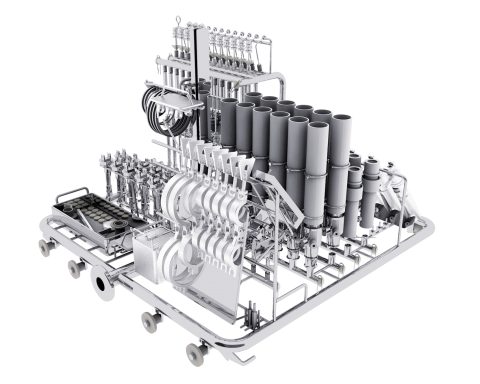Almost all workplaces can present some sort of hazard to your health, whether you notice them or not. These risks vary depending on your job class and environment. Here, we’ll cover 4 types of workplace hazards to keep an eye out for. They often go unaddressed and can pose a serious risk to your health.
1) Safety Hazards
Safety hazards are one of the most prevalent workplace dangers. They encompass unsafe conditions that can lead to injury, illness, or death. A few examples of safety risks include:
Confined Spaces
Examples of confined spaces include:
- Silos
- Water supply towers
- Vats
- Boilers
- Manure pits
- Ditches
- Trenches
- Shipping containers
A confined space is not designed for continuous human occupancy. If precautions aren’t taken, workers can be harmed by a confined space’s construction, atmosphere, and materials. It’s advised to never work in a confined space unless a hazard assessment and control program is implemented. Some risks that can arise from working in a confined space include:
- Crush injuries
- Electrocution
- Entanglement
- Inhalation of poor air
Heights
Some workers are required to complete jobs from high places. Roofers, painters, firefighters, and construction workers are at high risk for falls. They work from ladders, scaffolds, and roofs. Even with the proper training, slips and accidents can happen at high heights.
According to the Occupational and Health Administration, 20% of worker deaths were in the construction industry, many of which were related to a fall. Obtaining the proper training can help reduce this percentage and protect your likely hood of injury at intense heights. Sites like Contractor Training Center offer contractor exam preparation and application assistance to help construction contractors get licensed. With this license secured, contractors gain valuable knowledge on how to safely complete jobs.
Machinery and Parts
Some workers deal with heavy machinery and its accompanying moving parts on a regular basis. Outdated parts can become dislodged and cause injury. In other cases, workers can get harmed even when performing intentional work. For example, missing ground pins, frayed cords, and improper wiring can all lead to electrocution.
2) Ergonomic Hazards
Ergonomic hazards are those caused by strain put on your body. They are especially discreet, as you may not even take note of them. Be aware of how your body position and working conditions strain your body. Examples of ergonomic hazards that can negatively affect your long-term health include:
- Repetitive or awkward movements
- Poor posture
- Frequent lifting, reaching, pushing, or pulling
- Non-adjustable chairs and desks
Workers like secretaries, bus drivers, delivery drivers, janitors, and stock clerks are susceptible to Ergonomic hazards. Even entertainers like musicians and athletes can fall victim to these hazards. No matter your job, it’s important to be mindful when performing tasks. Be willing to make adjustments to your routine to protect your long-term health.
3) Biological Hazards
Biological hazards involve the risks that come from working with humans, animals, or plants. They’re most common in hospitals, nursing homes, and research labs. If you work in one of these environments, you may come into contact with:
- Blood and other bodily fluids
- Viruses
- Bacteria
- Fungi
- Mold
- Animal droppings
4) Environmental Hazards
Environmental hazards don’t come from substances, but rather the climate of your workplace. These can include:
- UV rays. Working outside can take its toll and increase your chances of developing skin problems.
- Extreme temperatures. Depending on your environment, you can experience health issues like heat stroke or cold-induced asthma.
- Loud noises. Farmworkers, pilots, and even elementary school teachers can be exposed to loud noises for long periods of time. Long-term exposure will likely lead to hearing problems and may require a hearing aid to live a normal life. Rechargeable hearing aids are a great option for age-related hearing loss because of convenience and ease of use.
Work with Caution in Mind
Any job can come with health risks. Consider your line of work and seek the proper training to keep yourself in good health.








